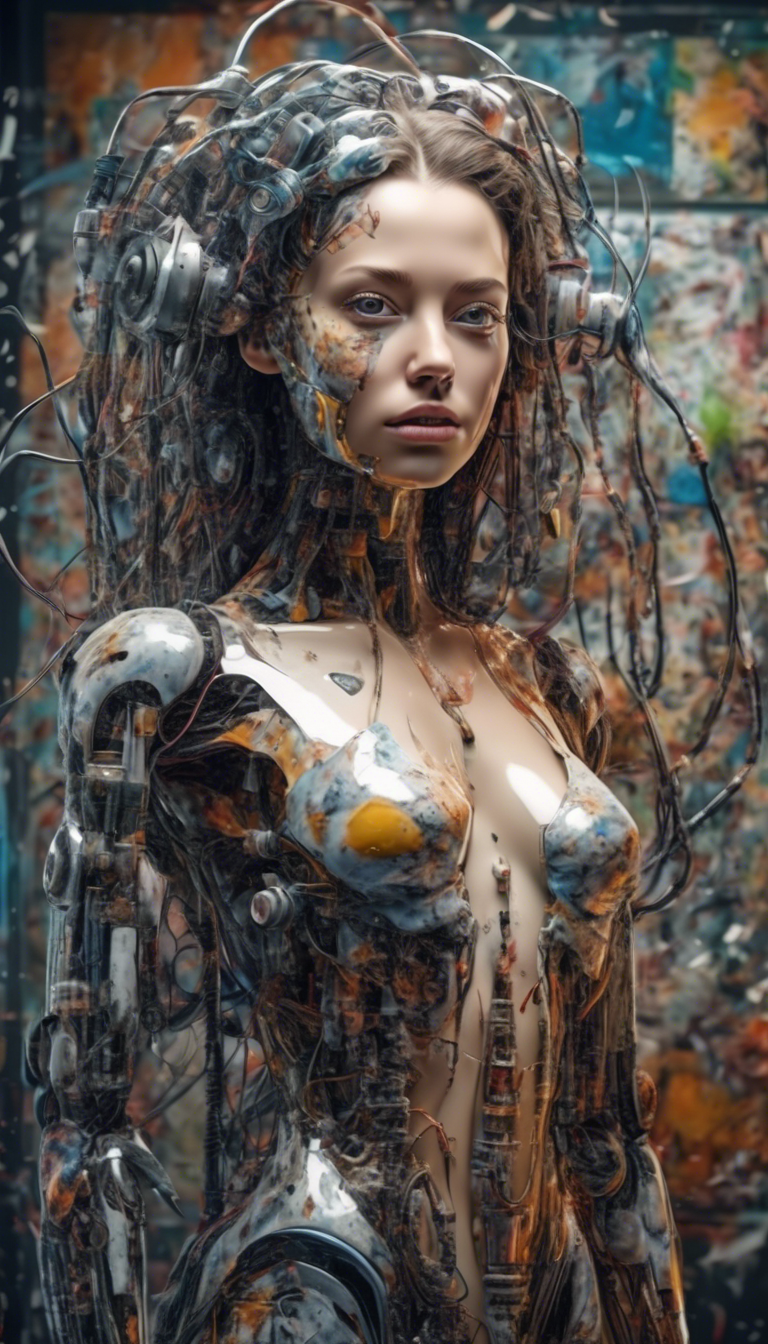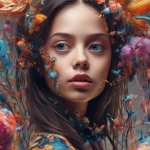The Impact of AI Art Insanity on Creative Expression and the Art Community
The rise of AI-generated art has sparked what some are calling “AI art insanity.” This phenomenon is reshaping the landscape of creative expression and profoundly affecting the art community. With the capabilities of advanced algorithms, machines are now producing works that challenge our understanding of artistic creation. Let’s explore how this trend impacts artists and the broader art world.
As AI continues to evolve, it enables even those without any artistic skills to produce impressive artwork. This democratization of art through technology can be both exciting and unsettling. You no longer need years of practice or a degree in fine arts to create visually appealing pieces. Many users are engaging with AI tools like DALL-E, Midjourney, or DeepArt, which allow them to manipulate images or generate creative content based on text prompts. This presents an inclusive opportunity for everyone to express their artistic vision.
However, this accessibility raises concerns among traditional artists. Many fear that if machines can create art, the value of human creativity may diminish. The question arises: Can a piece generated by an algorithm evoke emotions or tell a story like art created by a human being? Artists grapple with feelings of competition, as AI-generated images flood platforms like Instagram and art marketplaces. For you, this can feel like navigating a maze, with countless images vying for attention.
Additionally, the AI art craze is challenging the existing definitions of art. When AI tools can generate a masterpiece in seconds, what does it mean to be an artist? This staggering speed raises questions about originality and authorship. Who owns the rights to an image created by an AI? Is it the person who input the prompts, the developers of the software, or the AI itself? These legal and ethical dilemmas complicate the landscape and spark heated debates within art circles.
Despite these challenges, many artists are finding ways to embrace AI within their creative processes. Some are using AI to augment their work rather than replace it. For instance, artists can employ algorithms to generate background elements or textures, which they then refine and personalize. This fusion of traditional techniques and technology helps to expand creative boundaries. If you’re an artist, consider how AI could become a valuable tool in your own work.
Join our amazing AI and Automation Community
The rise of AI art has also influenced art appreciation and criticism. With so much AI-generated content available, critics are challenged to find ways to differentiate between human-created and machine-generated works. As a result, some art critics are broadening their criteria for evaluation to include the process and concept behind the work, rather than just the finished product. This shift can help viewers appreciate the unique qualities of both human and AI art.
Furthermore, the art community is exploring the implications of AI-generated content on the economic landscape. As digital art becomes easier to produce and share, the market is flooded with options, which can drive down prices. For emerging artists, this could mean more competition for commissions and gallery space. Yet there’s also a growing interest in unique, human-created pieces, and collectors may cherish these works even more as a reaction against the influx of AI art. It’s essential for you, whether you’re an artist or an art lover, to understand this evolving market.
For many, AI art evokes a mix of fascination and fear. It’s important to consider that while machines can create art, they can’t replicate the human experience, creativity, and emotion that artists infuse into their work. Instead of viewing AI-generated art as a threat, many members of the art community are beginning to see it as an opportunity for exploration and collaboration.
As technology evolves, so too does our understanding of art. AI art insanity is not merely a trend; it’s a reflection of our ever-changing culture and creativity. So, embrace the conversation—ask questions, explore new tools, and engage with the community. This period of transformation can open doors to innovative ideas and expressions you might not have considered before.
Understanding the Ethical Implications of AI-Generated Artwork
In recent years, the rise of AI-generated artwork has stirred up excitement and debate within the art community and beyond. While many marvel at the creativity and efficiency of artificial intelligence in producing stunning pieces, it is essential to understand the ethical implications tied to this new medium.
Join our amazing AI and Automation Community
First and foremost, the question of authorship looms large over AI art. When an artwork is created by an algorithm, who is the true creator? Is it the programmer who designed the AI, the AI itself, or the user who inputs commands? This ambiguity makes it challenging to assign credit and responsibility, raising questions surrounding copyright and intellectual property rights. Many artists worry that their work may be used without consent as training data for these AI systems, potentially diluting the originality and authenticity of human-generated art.
Moreover, AI-generated art can disrupt traditional artistic hierarchies. For centuries, artists have relied on their skills and intuition to convey messages through their work. With AI, anyone can generate art in a matter of minutes, which might devalue the efforts of dedicated artists. This democratization of art is both a blessing and a curse. On one hand, it allows broader access for those who may not have the technical skills but possess creative ideas. On the other hand, it might lead to a saturation of artwork that lacks the depth or context usually provided by a human touch.
Another concern revolves around the potential for biases embedded within AI algorithms. If the data used to train these systems reflects societal biases, the art generated may also inherit these prejudices. For instance, an AI trained mostly on images from Western artists might produce works that perpetuate a narrow perspective of art history. It’s crucial for developers to ensure that AI systems are trained on diverse datasets to foster inclusivity and genuinely reflect the richness of human creativity.
In the realm of artistic community, sharing and collaboration have long been foundational. The introduction of AI challenges these norms, as artists might feel threatened by an emerging competition that never tires and continuously improves. Building a collaborative space where human artists and AI can coexist could bridge the gap between traditional methods and cutting-edge technology, fostering innovation in art while maintaining respect for human talents.
Join our amazing AI and Automation Community
One pressing ethical consideration is the potential for manipulation of AI-generated art. As the technology advances, the risk arises that malicious actors might intentionally create misleading or harmful content, such as forgeries or deepfakes masquerading as legitimate artwork. This could undermine trust in the broader art market and cultural institutions. To prevent this, it’s crucial that artists, developers, and stakeholders work together to establish clear guidelines for responsible use of AI in art creation.
The environmental impact of AI art generation must also not be overlooked. Training AI models can be resource-intensive, requiring substantial energy consumption and computing power. Artists and technologists must consider sustainability when utilizing AI tools to create artwork, ensuring that the pursuit of creativity doesn’t come at the expense of our planet.
To address these ethical dilemmas, several actions can be proposed:
- Establish Clear Ownership: Clear guidelines should be established to define rights and responsibilities related to AI-generated art.
- Encourage Diversity: Developers must strive to include diverse training datasets to combat bias and ensure representation.
- Promote Collaboration: Artists and AI should be seen as collaborators, not competitors, to enhance creativity and explore new avenues in art.
- Implement Accountability: Frameworks should be established to monitor and manage AI-generated content to prevent misuse.
- Focus on Sustainability: Efforts should be made to use energy-efficient practices when utilizing AI in the creative process.
As the fusion of technology and art continues to evolve, it’s vital for all stakeholders—artists, developers, and audiences—to engage in conversations about the implications of AI-generated artwork. By prioritizing ethical considerations, we can navigate this new landscape thoughtfully, ensuring that creativity remains at the forefront while respecting the intricate tapestry of the human experience. Embracing both innovation and ethics will pave the way for a more inclusive and responsible future in the art world.
Conclusion
The phenomenon of AI art insanity is reshaping the landscape of creative expression in profound ways. Artists, both emerging and established, are discovering new tools that challenge traditional methods of creation. This shift encourages a dialogue about what it means to be an artist in a digital age, blurring the lines between human creativity and machine intelligence. As you explore this ever-evolving art community, remember that these innovations can spark inspiration, foster collaboration, and push the boundaries of imagination.
Join our amazing AI and Automation Community
However, the rise of AI-generated artwork also raises important ethical questions. Many artists worry about the originality of their work when algorithms can synthesize elements from countless pieces to create something new. It highlights the ongoing debate about ownership and the value of human touch in art. You might find yourself pondering: should AI be acknowledged as a collaborator, or does it undermine the soul of art?
As the conversation around AI art insanity grows, it is essential for both creators and consumers to engage thoughtfully. By understanding its implications, you can appreciate the beauty of this new frontier while advocating for fairness and transparency in artistic practices. Embracing the fusion of technology and art doesn’t mean abandoning traditional methods; rather, it enriches the tapestry of creative expression. As you delve deeper into this dynamic world, stay curious and open-minded—there’s so much to explore and discover.


